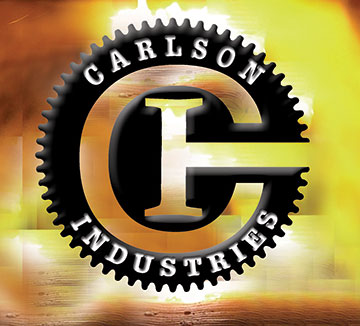We Have Over 40 years of Experience in HardFacing
Carlson Industries in Minnesota has been a supplier to leading companies worldwide that manufacture machinery that is subject to abrasion wear.
Carlson Knives, Manufactured in Minnesota
Carlson expertise developed the knives used in the forage harvesters marketed world wide by a major manufacturer of farm equipment. Carlson knives substantially outperform the knives this company used previously and those used by competitors and gives the OEM an edge in new equipment sales.
The Carlson proprietary process that deposited the tungsten carbide on OEM hammermill hammers grinding everything from aquatic feed in Alabama to zinc dross in Zimbabwe produces wear surfaces that are unequalled in durability and longevity. The superior performance of Carlson hammers allows the OEM to maintain a substantial market share in the replacement hammer business despite fierce aftermarket competition.
What is hardfacing?
Metal parts often fail their intended use not because they fracture, but because they wear, which causes them to lose dimension and functionality. Hardfacing, also known as hardsurfacing, is the application of buildup or wear-resistant weld metals to a part’s surface by means of welding or joining.
What base metals can be hardfaced?
Carbon and low-alloy steels with carbon contents of less than 1 percent can be hardfaced. High-carbon alloys may require a special buffer layer.
The following base metals can be hardfaced:
• Stainless steels
• Manganese steels
• Cast irons and steels
• Nickel-base alloys
• Copper-base alloys
What is the most popular procedure used to apply hardfacing?
In order of popularity, the following procedures can be used:
• Flux cored arc welding (FCAW)
• Gas metal arc welding (GMAW)
• Shielded metal arc welding (SMAW)
• Submerged arc welding (SAW)
• Gas tungsten arc welding (GTAW)
• Oxyfuel welding (OFW) or oxyacetylene welding
• Plasma transferred arc welding, laser welding, thermal spray, and brazing
Tungsten Carbide Hardfacing Products
Fusion hardfacing is a process by which weld materials, with superior properties than the substrate, are applied to the substrate. Often, two layers total 3 – 6 mm (1/4 – 1/2 in) thick are applied to reduce the surface hardness dilution of the relatively low-cost steel substrates in the expansive cobalt-base alloys.

